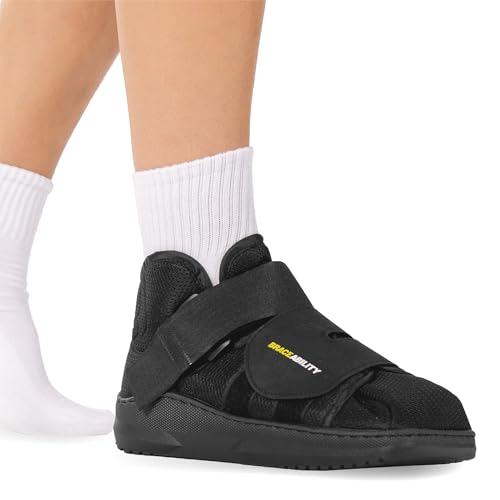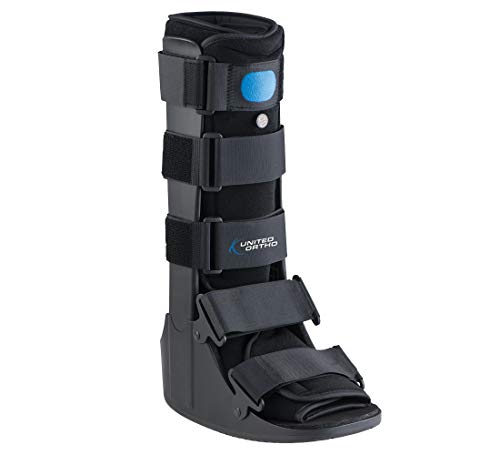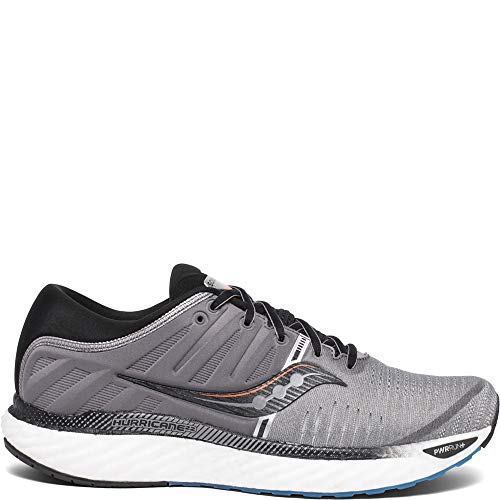Recovering from a broken foot can be challenging, but the right pair of shoes can make all the difference. Whether navigating the halls of your home or slowly regaining your mobility, choosing the best shoes for broken foot recovery is essential. In this guide, we’ll explore the key features to look for in recovery footwear and highlight some of the top options available. From cushioning to stability, we’ve got you covered so you can focus on healing with the utmost comfort and support.
Why Is It Important to Invest in the Right Shoes for Recovery?
When recovering from a broken foot, selecting the right pair of shoes is not just a matter of style – it’s a crucial investment in your healing journey. Proper footwear can play a significant role in expediting your recovery process and ensuring long-term foot health. This article delves into the profound benefits of choosing the right shoes for recovery and how they can contribute to your overall well-being.
Supporting Your Feet and Reducing Muscle Stress
Recovery shoes are specifically designed to provide the support your healing foot needs. Unlike regular footwear, they offer enhanced cushioning and stability, minimizing the strain on your injured foot. The arch support found in many recovery shoes is essential for maintaining the natural alignment of your foot’s structure. This not only helps reduce muscle stress but also aids in preventing any further complications that may arise during the healing process.
Promoting a Smooth Heel-to-Toe Transfer
One of the primary functions of proper recovery footwear is facilitating a smooth heel-to-toe transfer as you walk. This seamless motion is critical for maintaining your gait and preventing additional strain on your foot. Recovery shoes often feature a rocker-style sole, which assists in promoting this fluid movement. The curvature of the sole encourages your foot to roll naturally from heel to toe, reducing the impact on your healing foot and providing a more comfortable walking experience.
The Role of Arch Support, Rocker-Style Soles, and Raised Heels
Arch support is a fundamental feature to look for in recovery shoes. It helps distribute your body weight evenly across your feet and minimizes pressure on specific areas, which can be especially beneficial during healing. Additionally, rocker-style soles contribute to a more efficient and pain-free walking pattern. The curved design allows a gradual transition between your foot’s different movement phases, further reducing strain.
Raised heels, often found in recovery footwear, are crucial in offloading pressure from the forefoot. By slightly elevating the heel, these shoes help alleviate stress on the front of the foot, making them an ideal choice for individuals recovering from fractures or surgery in this area.
Investing in the right shoes for recovery is not just a luxury but a necessity. Their support, stability, and comfort can significantly impact your healing process, making it smoother and more efficient. As you embark on your journey to full recovery, prioritize the well-being of your feet by choosing footwear that provides the essential arch support, rocker-style soles, and raised heels. With the right recovery shoes, you’ll step towards physical healing and walk confidently toward a brighter, more active future.
Types of Foot Injury and the Appropriate Shoes
When recovering from a foot injury, the right pair of shoes can facilitate healing and minimize discomfort. Different types of foot injuries require specific footwear to provide support, stability, and comfort during recovery. Whether you’re dealing with a broken ankle, ankle sprains, muscle imbalances, foot fractures, or post-operative scenarios, choosing shoes tailored to your injury is crucial.
Broken Ankles
Recovering from a broken ankle demands shoes that offer support and stability to aid the healing journey. Shoes designed for damaged ankle recovery often feature deep heel cups, cushioned soles, and supportive uppers. These characteristics help maintain proper alignment, reduce strain on the injured area, and promote a smoother healing process. Selecting the right shoes involves considering your daily activities and foot type to ensure optimal comfort and support throughout your recovery.
Ankle Sprains
Ankle sprains come in various types, and wearing appropriate shoes can significantly contribute to the recovery. Supportive footwear is essential to prevent further strain on the injured ligaments. These shoes reinforce the affected area, aiding healing and reducing re-injury risk. When choosing shoes for ankle sprains, prioritize options that offer stability and cushioning to facilitate a faster and safer recovery.
Muscle Imbalance
Muscle imbalances can significantly impact foot injury recovery, potentially leading to altered biomechanics and conditions like plantar fasciitis or Achilles tendinitis. Correcting muscle imbalances is crucial for restoring proper foot function. Shoes that promote stability and balance can aid in mitigating the effects of muscle imbalances. Additionally, incorporating exercises and stretches targeting specific muscle groups can help improve foot alignment and function during recovery.
Foot Fractures
Foot fractures require specialized shoes that offer support, cushioning, and protection to aid healing. Depending on the fracture type, specific footwear can help distribute weight evenly and minimize pressure on the injured area. Proper shoes for foot fracture recovery contribute to a smoother healing trajectory, ensuring comfort and stability while allowing the fracture to mend effectively.
Foot Surgeries
Different foot surgeries, such as a bunionectomy, hammertoe correction, plantar fasciitis release, and Achilles tendon repair, necessitate specific footwear during recovery. Post-operative shoes are designed to provide optimal support, reduce strain on the surgical site, and promote healing. Wearing appropriate shoes following foot surgery is essential for minimizing post-operative pain and complications and successful recovery.
Choosing the right shoes tailored to your specific foot injury is fundamental to recovery. Investing in appropriate footwear can significantly contribute to your overall healing journey, whether healing from a broken ankle, ankle sprains, muscle imbalances, foot fractures, or foot surgeries. Prioritize support, stability, and comfort to ensure a smoother and more successful recovery.
Characteristics of Good Recovery Shoes
In the journey toward healing and regaining mobility after a foot injury, the characteristics of your recovery shoes play a crucial role. These features not only enhance your comfort but also contribute significantly to the effectiveness of your recovery process. From a deep heel cup to a breathable upper design, each aspect is designed to provide the support, stability, and comfort your healing foot needs.
Deep Heel Cup
A deep-heel cup is a fundamental feature in recovery shoes that offers many benefits. It stabilizes the foundation, reducing strain on the Achilles tendon and promoting proper foot alignment. A deep heel cup helps prevent excessive pronation by cradling the heel, enhancing shock absorption and cushioning. This feature is particularly important in mitigating the impact of walking or standing during recovery.
Cushioned Sole and Soft Midsole Material
Recovery shoes with a cushioned sole and soft midsole material offer a luxurious and supportive environment for your broken foot. These features ensure effective shock absorption, reducing the impact on your healing foot as you move. The cushioned sole also aids in pressure relief, distributing weight more evenly and minimizing discomfort. Choosing shoes with these characteristics enhances your overall comfort and accelerates recovery.
Supportive Uppers
The importance of supportive uppers cannot be understated in recovery shoes. These uppers provide stability, preventing re-injury and promoting a secure fit. Materials like mesh or leather are commonly used for supportive uppers, offering durability and structural reinforcement. With the right supportive uppers, you can confidently navigate your recovery journey while minimizing the risk of setbacks.
Breathable Mesh or Leather Upper Design
A breathable upper design, such as breathable mesh or leather, is crucial in recovery shoes. Proper airflow helps prevent the discomfort of hot and sweaty feet, especially after a workout or prolonged wear. Open-toe shoe designs, like the Under Armour Unisex UA Recover LCE Shoes, provide natural ventilation, ensuring your feet stay fresh and comfortable. With their breathable knit material, these recovery shoes prioritize airflow and deliver a cozy, sock-like feel, enhancing your comfort during the healing process.
The characteristics of good recovery shoes extend beyond mere aesthetics. Deep heel cups, cushioned soles, supportive uppers, and breathable designs collectively contribute to a more effective and comfortable recovery journey. By selecting shoes that incorporate these features, you’re making a thoughtful investment in your healing process, allowing your foot to mend while experiencing optimal support and comfort.
Factors to Consider When Choosing Recovery Shoes
Selecting the right recovery shoes is pivotal in ensuring smooth healing and regaining mobility with comfort and confidence. To make an informed choice that caters to your unique needs, consider the following factors when choosing recovery shoes:
1. Injury Type and Severity:
The nature and severity of your foot injury should guide your choice of recovery shoes. Different injuries require specific support and features. For instance, a broken ankle may necessitate shoes with a deep heel cup and enhanced stability, while muscle imbalances might require cushioned soles for shock absorption.
2. Support and Stability:
Recovery shoes should provide ample support to aid healing and prevent re-injury. Look for shoes with supportive uppers and a firm yet comfortable sole. Features like arch support and deep heel cups contribute to stability and proper alignment, facilitating a smoother recovery.
3. Cushioning and Comfort:
Opt for recovery shoes with sufficient cushioning and a soft midsole material. Cushioned soles offer shock absorption and pressure relief, promoting overall comfort during your healing journey. A comfortable shoe can make a significant difference in reducing discomfort and enhancing your mobility.
4. Breathability and Airflow:
Breathable materials, such as mesh or leather uppers, promote airflow and prevent your feet from becoming hot and sweaty. Adequate ventilation is crucial, especially during physical activity or prolonged wear, to maintain comfort and avoid skin irritation.
5. Flexibility and Range of Motion:
Choose recovery shoes that allow for natural movement and flexibility while providing support. Your foot’s range of motion should be accommodated without causing strain or discomfort. Look for shoes that strike a balance between support and flexibility.
6. Activity Level and Lifestyle:
Consider your daily activities and lifestyle when selecting recovery shoes. You may opt for cozy slippers with soft cushioning if you’re primarily indoors. On the other hand, if you’re gradually reintroducing physical activity, choose shoes that offer adequate support for the specific movements involved.
7. Fit and Sizing:
Proper fit is crucial for recovery shoes. Ensure your shoes fit comfortably and securely without causing pressure points or tightness. Ill-fitting shoes can impede healing and exacerbate discomfort.
8. Healthcare Professional Recommendations:
Consult your healthcare provider or orthopedic specialist for personalized recommendations. They can provide insights into your needs and suggest recovery shoes aligning with your healing goals.
9. Ease of Use:
During recovery, convenience matters. Consider shoes with easy closure mechanisms, like Velcro straps or slip-on styles, to minimize the effort required to put them on or take them off.
10. Aesthetics and Style:
While functionality is paramount, you don’t have to compromise on style. Many recovery shoes come in various designs and colors, allowing you to choose a pair that aligns with your preferences.
Choosing the right recovery shoes involves considering various factors contributing to your healing process and overall comfort. By evaluating the injury type, support, comfort, and other key aspects, you can make an informed choice that promotes effective recovery and a smooth return to your daily activities.
10 Best Shoes for Broken Foot Recovery
When recovering from a broken foot, the right footwear can make a difference in your comfort and healing. We’ve curated a list of the five best shoes for damaged foot recovery, each designed to provide the necessary support, protection, and comfort to aid your rehabilitation.
1. United Ortho Short Air Cam Walker Fracture Boot, Small, Black
- BEFORE PURCHASING please view our sizing chart (second image). Size...
- USER GUIDE included in each boot for proper application. Please follow...
The United Ortho Short Air Cam Walker Fracture Boot offers targeted support for smaller foot sizes. Its air-filled chambers provide customizable compression, allowing you to adjust the fit as your healing progresses. The lightweight design and rocker sole encourage a natural gait while protecting your broken foot.
2. United Ortho Air Cam Walker Fracture Boot, Medium, Black
- BEFORE PURCHASING please view our newest sizing chart (second image)....
- USER GUIDE included in each boot for proper application. Please follow...
The United Ortho Air Cam Walker Fracture Boot is ideal for medium-sized feet and offers similar benefits to the smaller version. Its adjustable air chambers and durable construction ensure proper support and protection during your recovery journey.
3. BraceAbility Closed Toe Medical Walking Shoe
- Find your perfect, comfortable fit: Refer to the size chart for...
- Post-op protection and foot support: Medical walking boot for foot...
The BraceAbility Closed Toe Medical Walking Shoe is an excellent choice for those with a larger foot size. Designed to accommodate various foot conditions, including metatarsal stress fractures and post-operative recovery, this lightweight and versatile shoe provides targeted support and protection.
4. United Ortho 360 Air Walker Standard Fracture Boot – Medium, Grey
- Use for acute ankle sprains, soft tissue injuries, post-operative use...
- Streamlined, semi-rigid shell is lightweight yet provides maximum...
The United Ortho 360 Air Walker Standard Fracture Boot offers comprehensive support and protection for medium-sized feet. With a 360-degree air bladder system, this boot ensures uniform compression and stabilization, aiding in healing fractures and other foot injuries.
5. BraceAbility Short Walking Boot
- BEFORE PURCHASING please view our size chart (the 5th image above).
- CLINICALLY PROVEN TO PROTECT & TREAT a broken toe, metatarsal...
Specifically tailored for smaller feet, the BraceAbility Short Walking Boot addresses a range of foot injuries, from broken toes to stress fractures. It’s orthopedic design and supportive structure facilitate proper healing while providing the comfort needed for a smooth recovery process.
Selecting the right shoes for broken foot recovery is crucial for ensuring comfort and optimal healing. Each of the five options mentioned above is designed to cater to various foot sizes and conditions, providing the necessary support and protection you need during your rehabilitation journey. Remember to consult your healthcare provider for personalized recommendations based on your specific injury and recovery requirements.
New Balance and Running Shoes
Recovering from a broken foot requires careful consideration of every step you take. Choosing the right shoes during this healing journey can significantly improve your comfort, support, and overall recovery progress. To help you make an informed decision, we’ve curated a list of the top five best shoes for broken foot recovery, each designed to provide the utmost care and assistance as you work towards regaining your mobility.
6. Brooks Ghost 14:
- THIS WOMEN'S SHOE IS FOR: Runners looking for a smooth ride that...
- SUPPORT AND CUSHION: The Ghost 14 offers neutral support while...
The Brooks Ghost 14 is a go-to choice for broken foot recovery thanks to its exceptional cushioning and support. Engineered with a responsive midsole and deep heel cup, these shoes offer unparalleled comfort while promoting proper alignment. The BioMoGo DNA and DNA Loft cushioning technology absorb impact and reduce strain on your healing foot, making them an excellent option for those seeking a plush and supportive ride.
7. Hoka One One Bondi 7:
- HOKA
- HOKA Bondi 7 Womens Shoes Size 9.5, Color: Black/White
If maximum cushioning and comfort are your top priorities, the Hoka One One Bondi 7 is a standout option. With an oversized midsole that cradles your foot and reduces pressure, these shoes provide a cloud-like feel with every step. The meta-rocker technology encourages a natural gait, which can be particularly beneficial for recovering from a broken foot.
8. ASICS Gel-Kayano 28:
ASICS Gel-Kayano 28 combines stability and support, making it a great choice for those seeking extra reinforcement during their recovery. These shoes feature a deep heel cup, impact-absorbing Gel cushioning, and a structured upper that securely holds your foot in place. The Dynamic DuoMax Support System further enhances stability, making the Gel-Kayano 28 an excellent companion for broken foot rehabilitation.
9. New Balance Fresh Foam 1080v11:
No products found.
Known for its plush cushioning and versatile design, the New Balance Fresh Foam 1080v11 is a top contender for broken foot recovery shoes. The Fresh Foam midsole provides a comfortable and responsive feel, while the Ortholite sockliner adds an extra cushioning layer. These shoes offer a balanced combination of support and flexibility, ensuring your foot receives the care it needs during healing.
10. Saucony Guide 14:
- Men 10.5oz (298g)
- Cushioning: PWRRUN
The Saucony Guide 14 balances stability and comfort perfectly, making it a great option for broken foot recovery. With a cushioned midsole and a supportive upper, these shoes offer a secure fit that minimizes strain on your healing foot. Guide 14 is particularly beneficial for those looking for structured support without compromising on cushioning.
The journey to recovery from a broken foot can be smoother with the right pair of shoes. These five options – Brooks Ghost 13, Hoka One One Bondi 7, ASICS Gel-Kayano 28, New Balance Fresh Foam 1080v11, and Saucony Guide 14 – have been carefully selected for their features that prioritize comfort, support, and stability. Remember, while these shoes can greatly assist your healing process, it’s essential to consult your healthcare professional for personalized recommendations based on your specific injury and recovery needs.
Conclusion:
Investing in the right footwear during your broken foot recovery can significantly impact your healing process and overall well-being. Everyone’s journey is unique, so take your time to find the shoes that provide the optimal blend of comfort, support, and style for your needs. By prioritizing your foot’s health and following your healthcare professional’s recommendations, you’ll be back on your feet in no time. Whether it’s a slip-on, an orthopedic design, or a versatile athletic shoe, the best shoes for broken foot recovery will help you take each step confidently toward a full and active life once again.
Last update on 2026-01-08 / Affiliate links / Images from Amazon Product Advertising API















